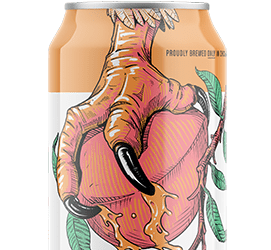Nicht-boil Berliner
Nicht-boil Berliner
(5 gallons/19 L, all-grain)
OG = 1.032 FG = 1.005
IBU = 5 SRM = 3 ABV = 3.5%
This recipe is inspired by Michael Tonsmeire’s modern take on the no-boil method. Make sure to keep your IBUs extremely low (<5 IBUs) to insure that the Lactobacillus will not be inhibited.
Ingredients
4 lbs. (1.8 kg) Pilsner malt
2.5 lbs. (1.13 kg) wheat malt
Rice hulls (optional)
4.5 AAU Hallertau Mittelfrüh hops (mash hop) (1 oz./28 g at 4.5% alpha acid)
Wyeast 5335 (Lactobacillus) or White Labs WLP677 (Lactobacillus Bacteria)
Wyeast 1007 (German Ale) or White Labs WLP036 (Dusseldorf Alt) yeast
Priming sugar (if bottling)
Step by Step
One week prior to brew day, make a 1 qt. (1 L) starter with the Lactobacillus. Do not place the starter on a stir plate but try to get the starter in a spot near your house boiler where temperatures would be above room temperature or a similar location with elevated temperatures. This should give the Lacto a jump start in order to get a nicely soured beer. If you are able to find one of the Berliner weisse yeast blends, you can alternatively pick up Wyeast 3191 (Berliner Weisse Blend) or White Labs WLP630 (Berliner Weisse Blend) or East Coast Yeast ECY06 (Berliner Blend) yeast which would blend one or more strains of Lactobacillus bacteria as well as a German ale yeast plus sometimes a Brettanomyces yeast as well.
This is a decoction mash. Dough-in with 4 qts. (3.8 L) water, mix the crushed grains and hops to achieve a mash temperature of 95 °F (35 °C). Rest for 10 minutes then raise the grain bed to 135 °F (57 °C) with the addition of boiling water. Let rest for 10 minutes then pull (decoct) half the grains (thick mash with little wort) and boil the grains for 20 minutes stirring often to avoid scorching them. Return the decocted portion back to the main mash to help raise the temperature up to saccharification temperatures to 152 °F (67 °C) for saccharification conversion. Rest at this temperature for 45 minutes. At this point you can pull a second decoction, which would require you to cut down on your mash hop quantities to half an ounce (14 g) or you can simply raise your mash up to 170 °F (77 °C) by using a recirculating heat method or by infusing boiling water to the mash. If you are using rice hulls add them prior to starting your lauter. Rest for 15 minutes and begin lauter phase. Once you start running off, send the wort directly into the wort chiller or fermenter. If you are fly sparging, be wary of the specific gravity or more specifically the pH of your run-off. If the pH of your grain bed rises above 6, your brew is susceptible to tannin extraction. One solution is to acidify your sparge water to pH 6 with the addition of phosphoric or lactic acid.
Collect 5 gallons (19 L) of wort. If the wort is not chilled, place wort in a cool spot or fridge to get it down to about 110 °F (43 °C) and pitch the pure Lactobacillus. Make sure that you have raised the temperature of the Lacto starter up to about this temperature as well since you don’t want to shock the bacteria. After about 12 hours when the temperature of the wort has cooled to yeast fermentation temperature of 65 °F (18 °C), pitch the ale yeast and hold at this temperature for duration of primary fermentation. Do not aerate the wort.
After primary fermentation is complete, you can raise the temperature of the wort up to around 80 °F (27 °C) to let the souring process occur more rapidly. One to three months of aging would be a minimal recommended time period to properly sour this beer. Carbonate the beer to three volumes of CO2. For carbonation guidelines, visit, visit https://byo.com/resources/carbonation. You can serve this beer with a raspberry syrup known as Himbeere (red) or a woodruff syrup know as Waldmeister (green). This is a light and refreshing brew best enjoyed on a hot summer afternoon.
Written by Dave Green

A mash hop recipe. This recipe is inspired by Michael Tonsmeire’s modern take on the no-boil method. Make sure to keep your IBUs extremely low (<5 IBUs) to insure that the Lactobacillus will not be inhibited.



